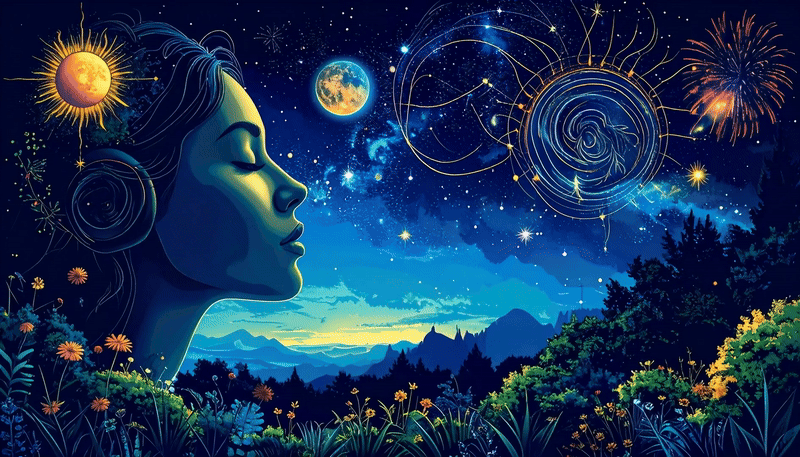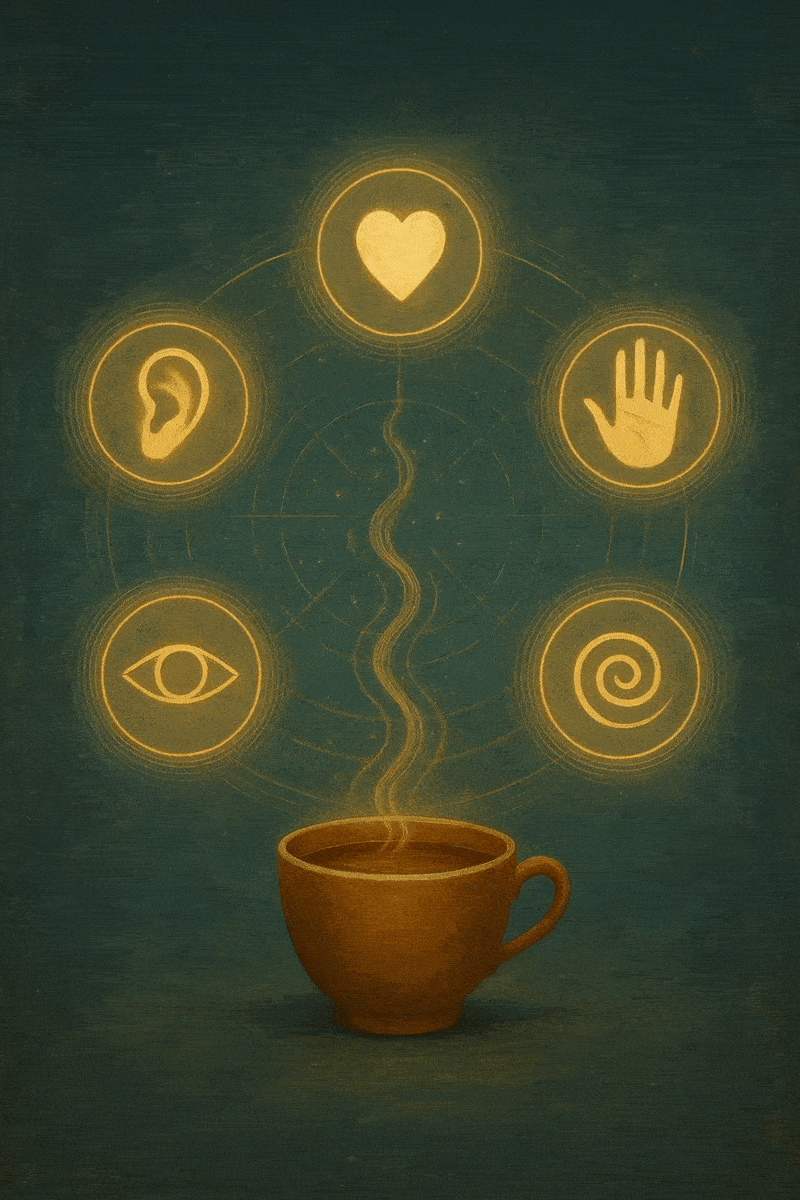Not Everyone Sees a Vision:
A Shamanic Perspective on Aphantasia & Inner Sight
Introduction
Have you ever closed your eyes in meditation or during a guided journey, expecting to see swirling colours, celestial temples, or radiant spirit animals… and instead found only darkness?
You are not broken.
You may simply be wired differently — and beautifully so.
There is a condition called aphantasia, where a person does not possess a functioning “mind’s eye.” That means they do not form mental images. But here's the twist — many shamans, intuitives, and seers do their deepest work without “seeing” anything at all.
🧠 What is Aphantasia?
The term aphantasia was coined in 2015 by neurologist Professor Adam Zeman of the University of Exeter, though the phenomenon has been observed for centuries.
People with aphantasia:
Cannot picture faces, places, or objects in their mind.
May experience dreams and emotions, but not visual imagery.
Often describe “knowing” something is there without seeing it.
It’s estimated that 3–5% of the population has full aphantasia, and many more are somewhere on the spectrum — experiencing very faint or fleeting inner imagery.
For some, this comes as a relief — an explanation for why they never “see” during visualisation meditations or shamanic journeys. For others, it can feel like they’ve been locked out of a magical world.
Let’s reframe that.
🌿 Seeing is the Least Common Way of Journeying
In my 30+ years of guiding others on the shamanic path, I’ve witnessed hundreds — maybe thousands — of people entering the visionary realms. And I can tell you this: “seeing” is not the most common way in.
We journey with all of our senses:
Some hear messages — whispers, songs, words in unknown tongues.
Some feel — tingles, shivers, waves of warmth or emotion.
Some just know — with sudden clarity, insight or certainty.
Some move — dancing, drumming, painting what they sense.
And yes, some see — but even they often say it’s vague or symbolic, not movie-quality CGI.
Western culture has idolised visual imagery. But in indigenous and animistic traditions, it is relationship that matters, not optics.
🌀 What’s Really Happening in a Journey State?
One of the greatest hurdles for many students I’ve trained isn’t their ability to sense — it’s their ability to stay conscious in the altered state.
Shamanic journeying often brings us to the liminal threshold — that subtle zone between wakefulness and sleep, where brainwaves slow, the body softens, and the mind drifts. It’s the same state we pass through as we fall asleep.
And here’s the catch: our modern minds are conditioned to conk out when we reach this zone. It takes practice and patience to remain awake enough to witness, yet relaxed enough to receive. It's a dance. And sometimes, especially at first, we just fall asleep — and that’s okay too.
Learning to hold that in-between space is a skill. It’s less about forcing visions and more about building the muscle of presence in deep relaxation.
🎶 Cacao & Gong Ceremonies: Opening the Door
One of the beautiful tools I’ve found in helping people access their inner world is ceremonial cacao — often paired with gong healing or other sound journeys.
The cacao opens the heart and softens the inner critic — she whispers it’s safe to receive. The gongs bathe the nervous system in waves, creating entrainment that helps guide the brain into theta and delta states — the dreamscapes of the soul.
In these ceremonies, I’ve seen people who never thought they could journey suddenly receive flickers of image, memory, or symbolic metaphor. Sometimes it’s a full cinematic experience. Other times, it’s a feeling, a colour, a single word.
Every ceremony is different.
Every participant is different.
The spirit of the plant and the sound know exactly what you need — and sometimes, that means not seeing. Sometimes, it means being held in stillness, or soothed into sleep, or simply receiving healing in a way you can’t explain.
🔍 What the Science Says
Modern research supports this broader understanding:
Neuroscientists have found that visualisation uses different brain networks depending on the person. Some light up the occipital lobe (vision), while others engage emotional and memory circuits instead.
Dr. Joel Pearson, a leading researcher in cognitive neuroscience, found that people with aphantasia often score just as high on creativity tests — but use other senses and memory strategies.
Dream studies show that even people with aphantasia often dream vividly, suggesting the inner landscape isn’t broken, just wired in a unique way.
So — if you can’t see with your mind’s eye, it doesn’t mean you’re blocked. You might be attuned to a different frequency of perception.
🛠️ Tips for Developing Inner Vision (If You Want To)
Not everyone with aphantasia wants to change how they experience the world — and that’s okay. But if you feel called to explore and expand your inner vision, here are some gentle tools:
Start with the Other Senses: Close your eyes and feel the sun on your skin. Hear the whisper of wind in trees. Imagine the sound, sensation, or emotion first — vision may follow.
Use Memory Anchors: Bring to mind your childhood bedroom. Try to remember the layout. Not seeing? Describe it aloud. Even verbal memory activates the imagination muscles.
Draw or Doodle Your Journey: Even stick figures or abstract shapes can unlock symbolism. Don’t worry about skill. Let the pen become a spirit antenna.
Try Dream Journaling: Some people with aphantasia can “see” in dreams. Start writing yours down, even fragments. Over time, this can bridge the subconscious with the waking mind.
Journey with Sound, Not Image: Gongs, rattles, drums, ambient recordings — these bypass the visual cortex and stimulate the inner ear of the soul. Let sound lead you inward.
Speak With Your Plant Allies: Sit with a plant. Ask for its wisdom. Don’t expect visions — but listen. Sense. Notice synchronicities. Insight often arises in the afterglow of the moment, not during it.
Release the Need to Force It: Inner vision isn’t a test you can pass or fail. Sometimes, when we stop trying, we finally receive.
💬 Final Thoughts
Whether your inner world glows with images or hums with wordless feeling - your way is sacred.
You don’t need to see the spirit world to be deeply connected to it. Many of the most powerful shamans I’ve worked with don’t “see” at all — they feel, they know, they listen, and they trust.
Your body is your temple.
Your senses are your altars.
And your truth… doesn’t need to be in technicolour to be profound.
🔮 Invitation
If this resonates — or if you’ve ever doubted your ability to journey or connect spiritually because of how your mind works — I invite you to join one of our upcoming shamanic journeys or cacao ceremonies. All ways of perceiving are welcome. No special skills required.
You already carry the key.




